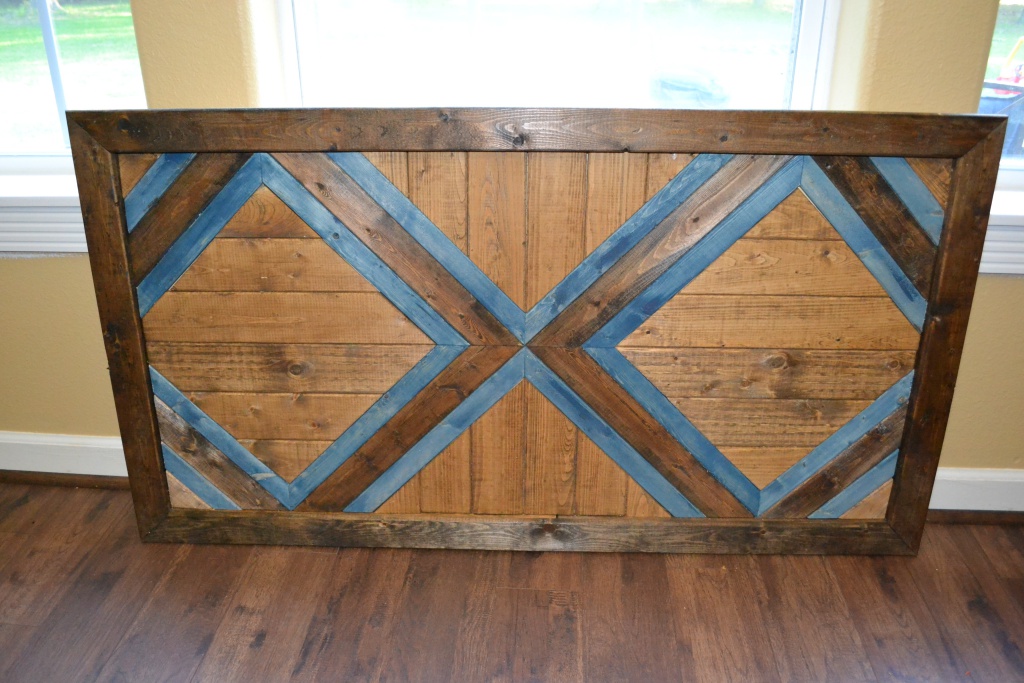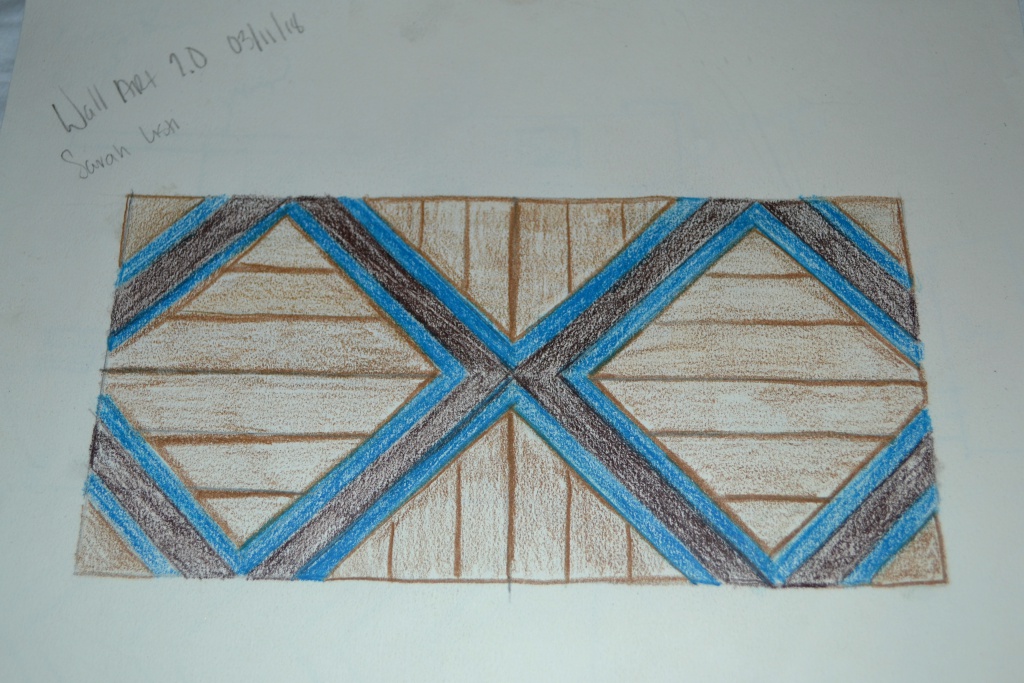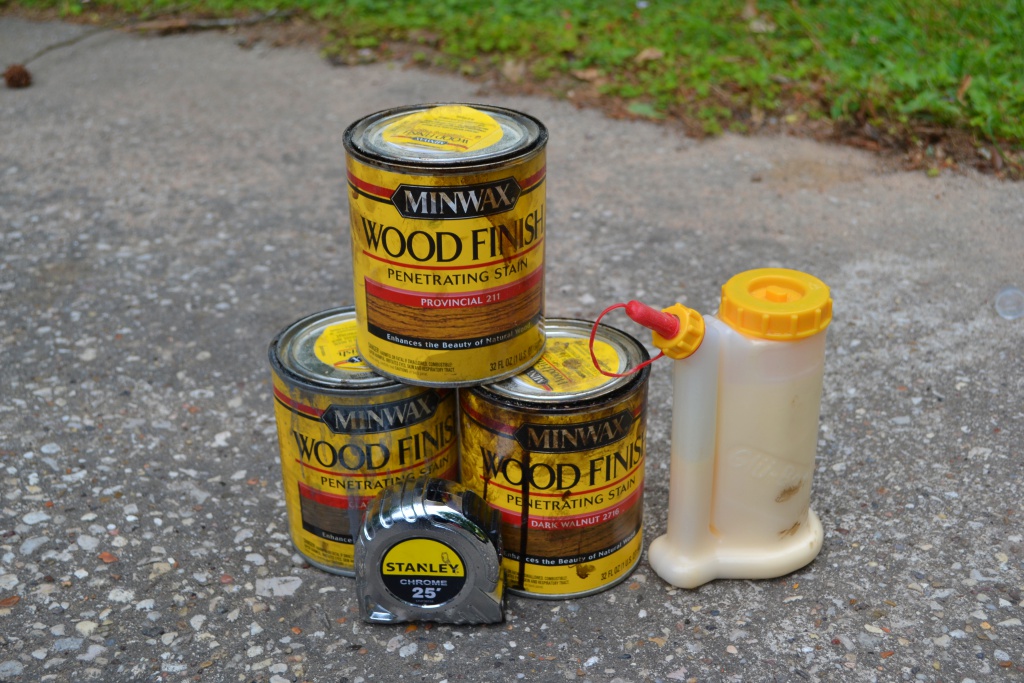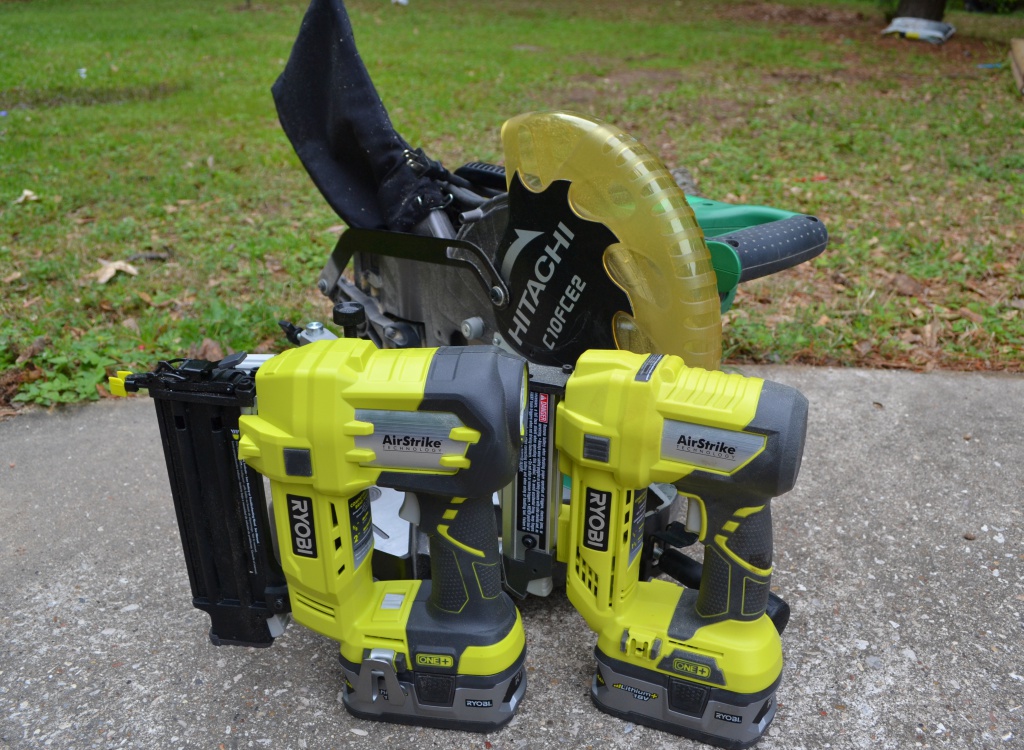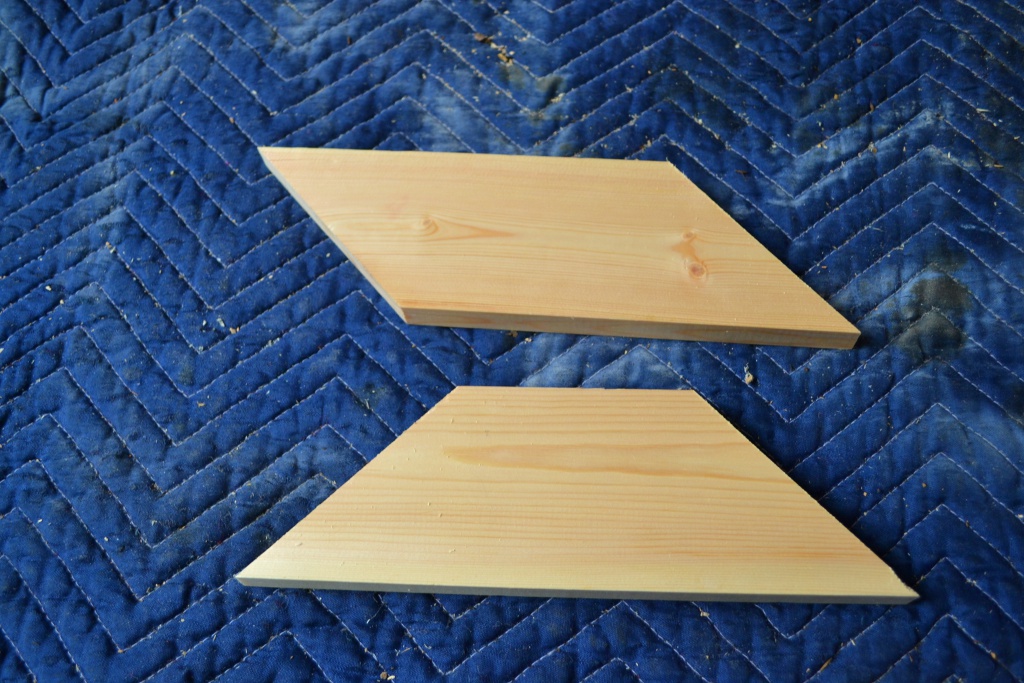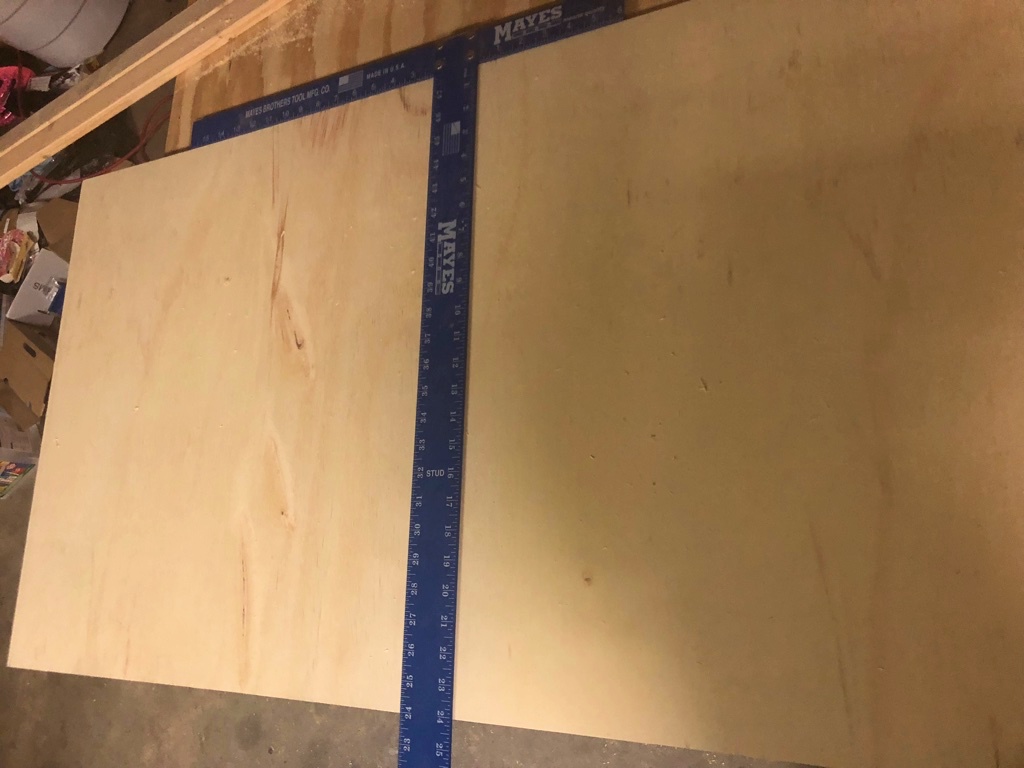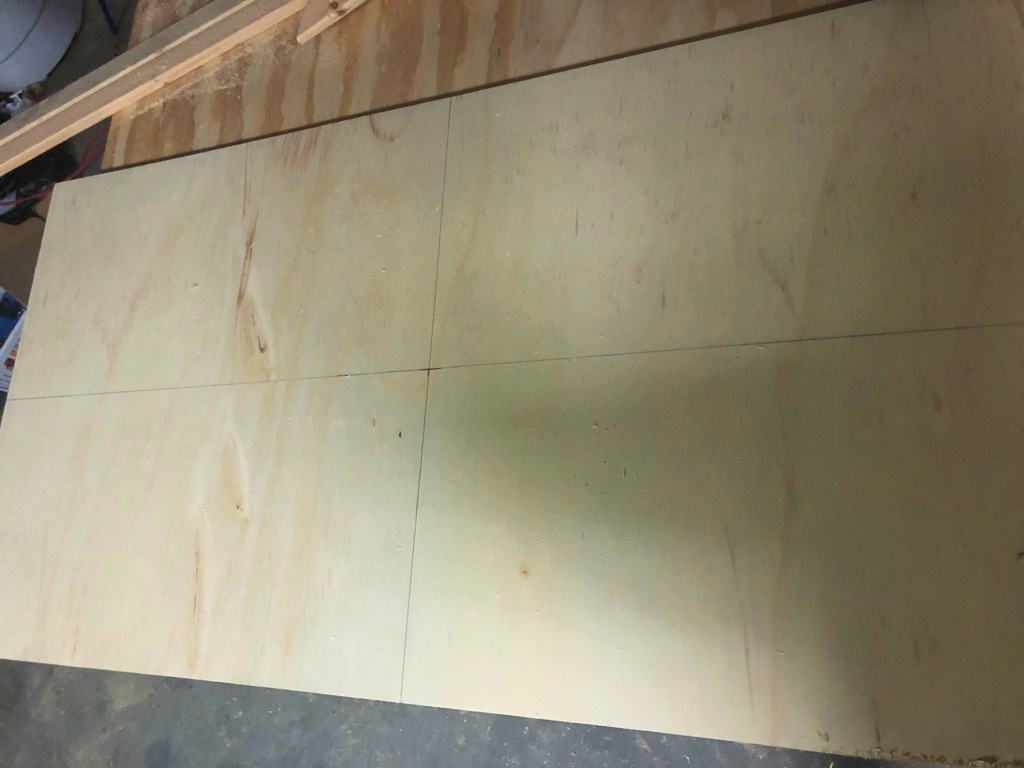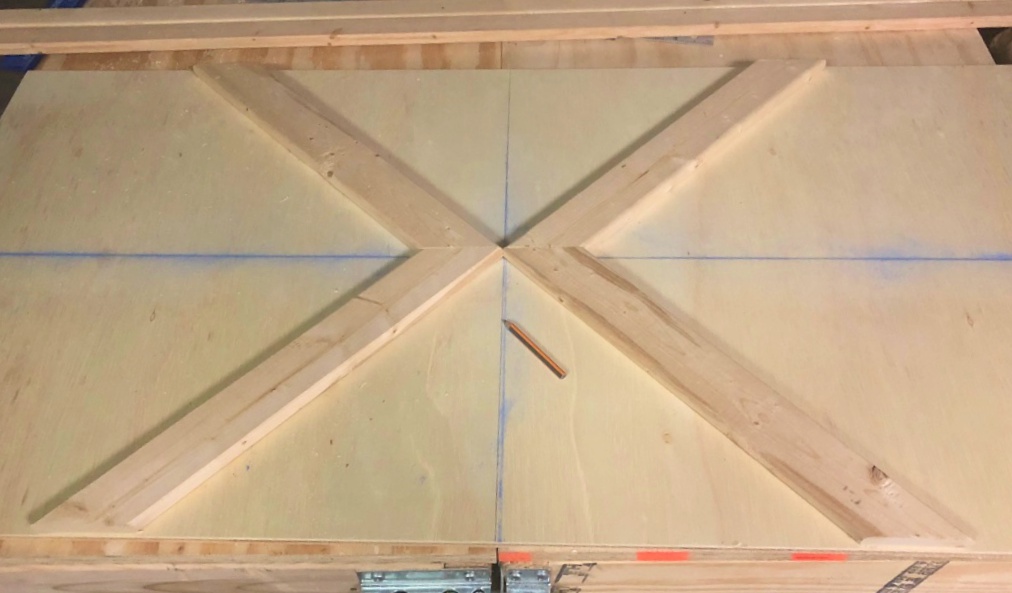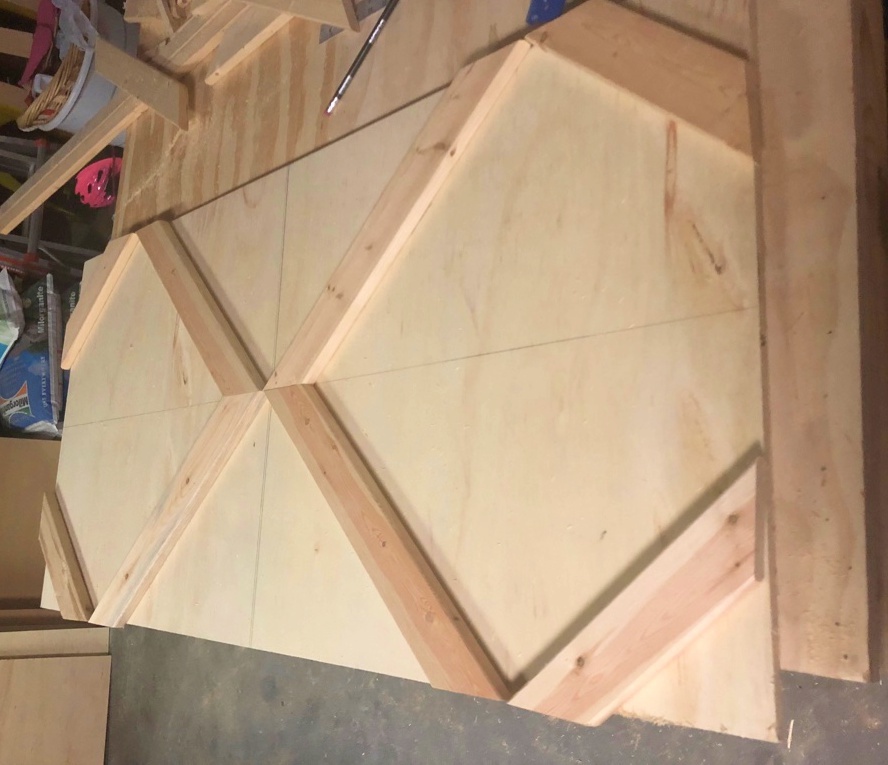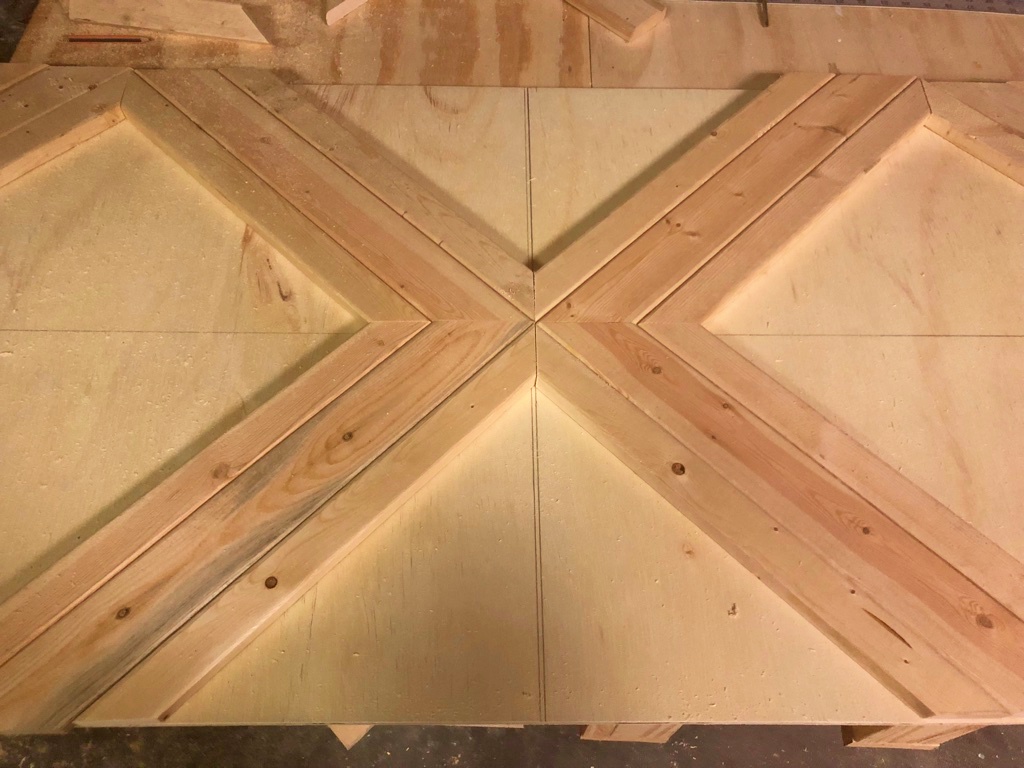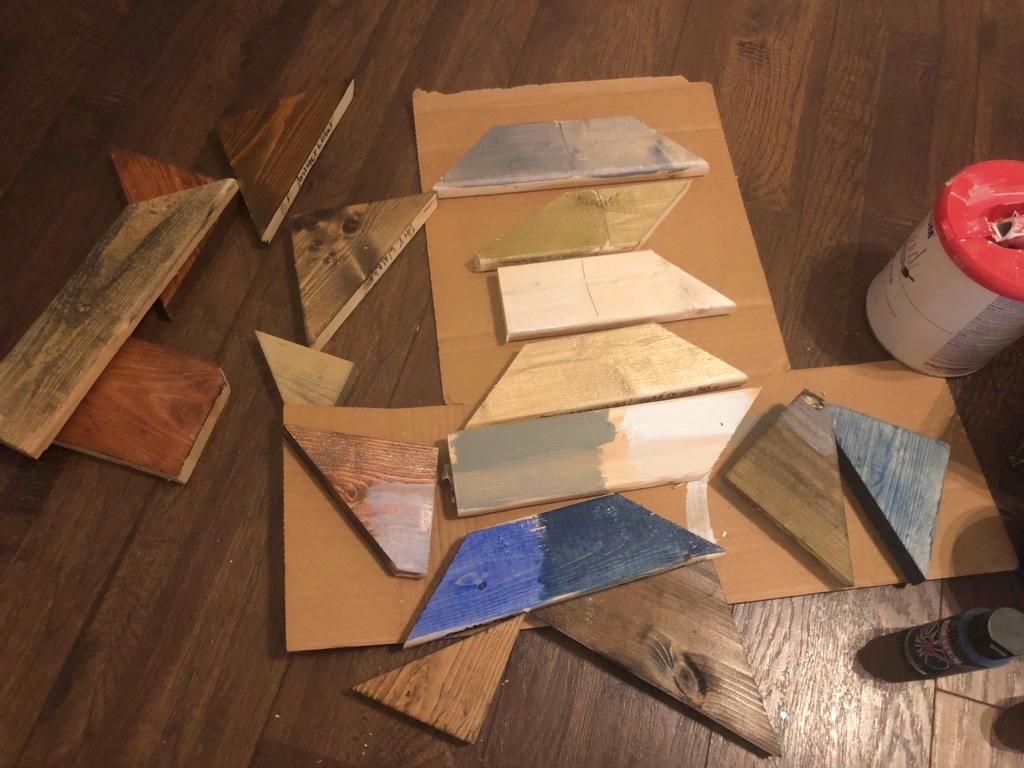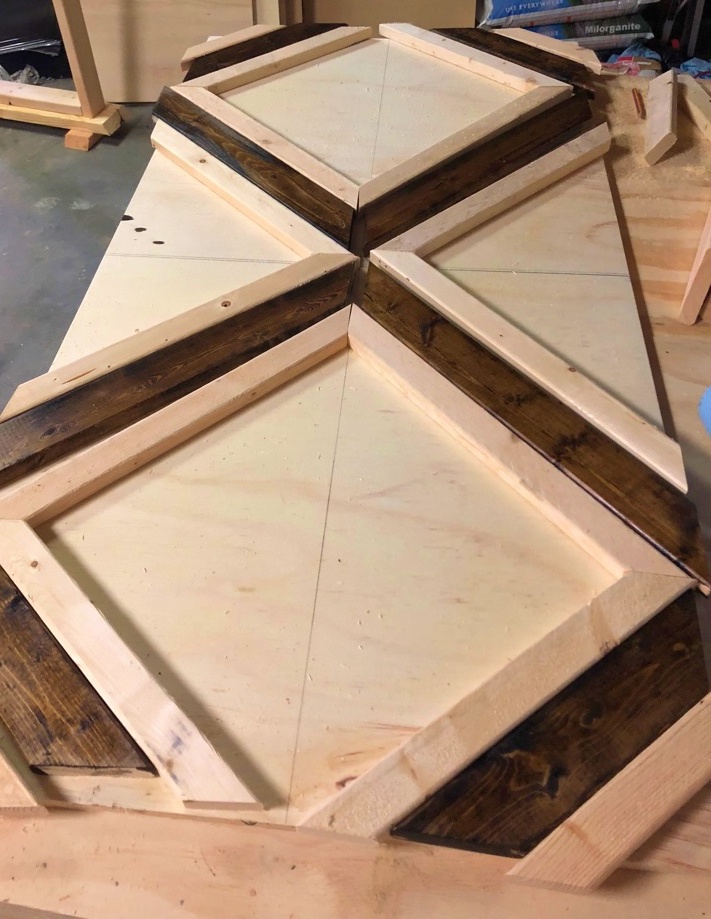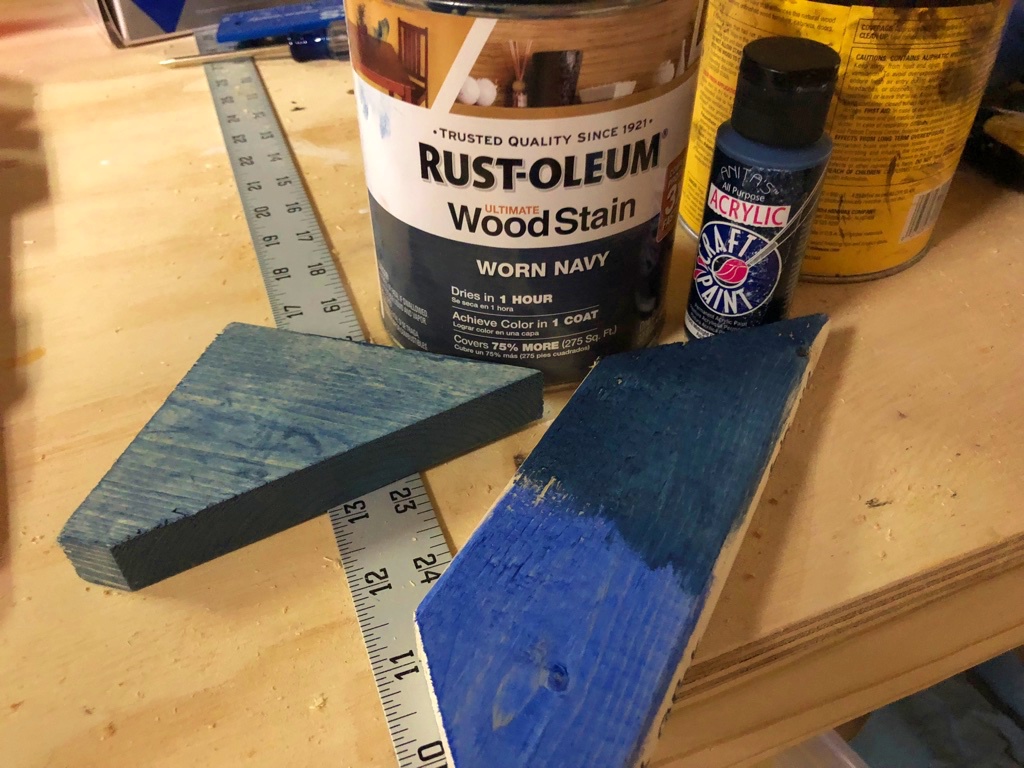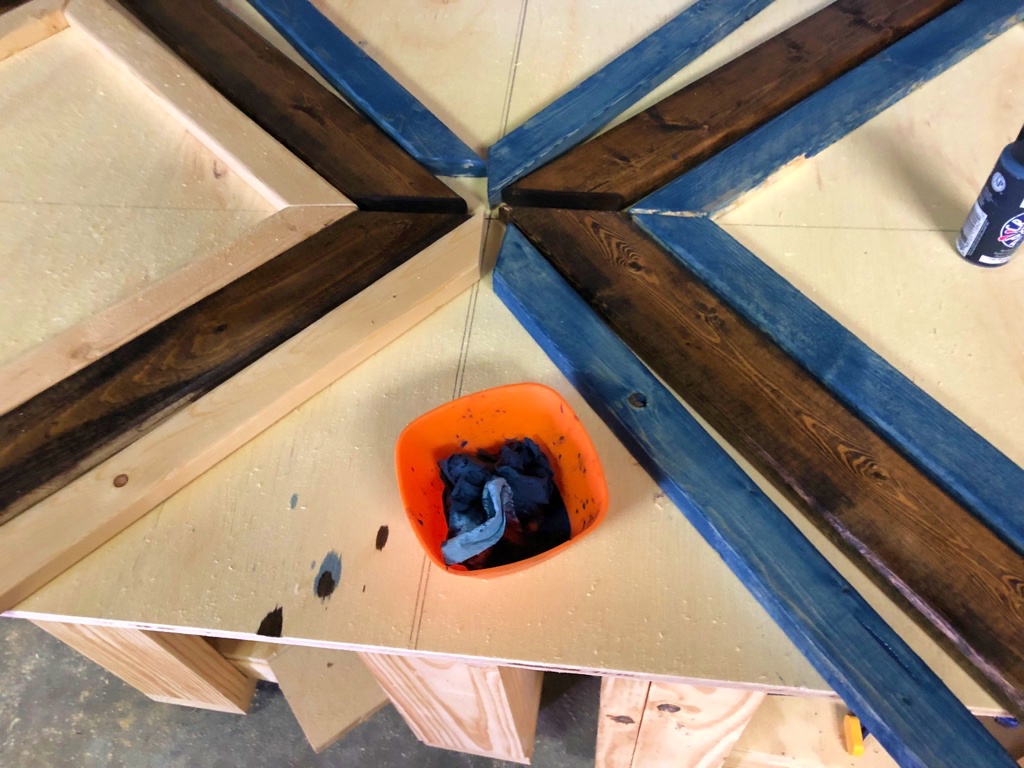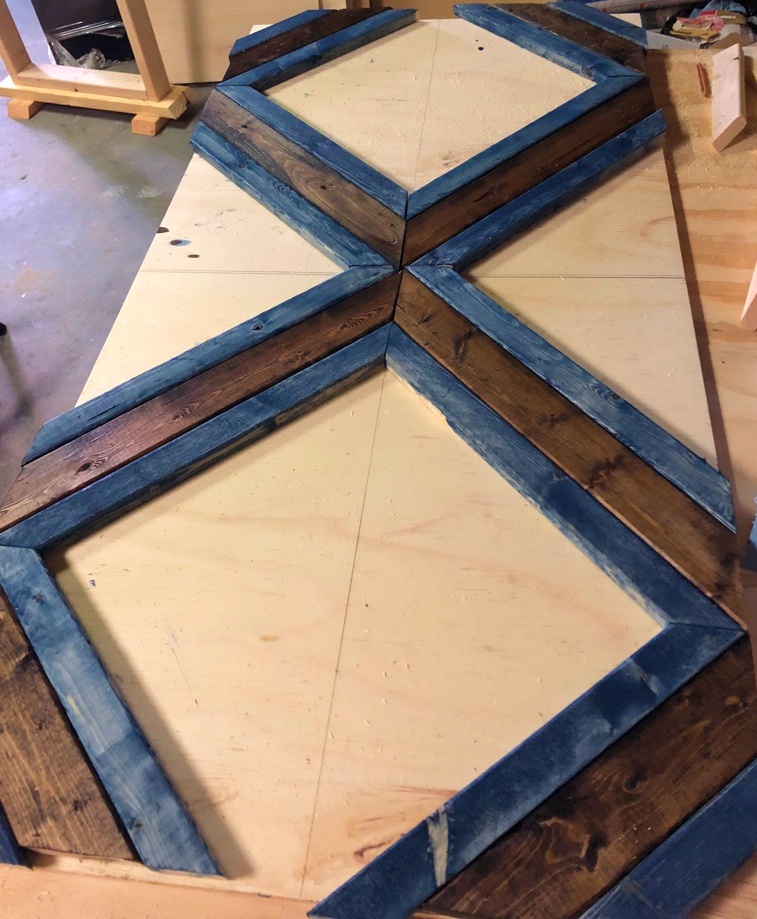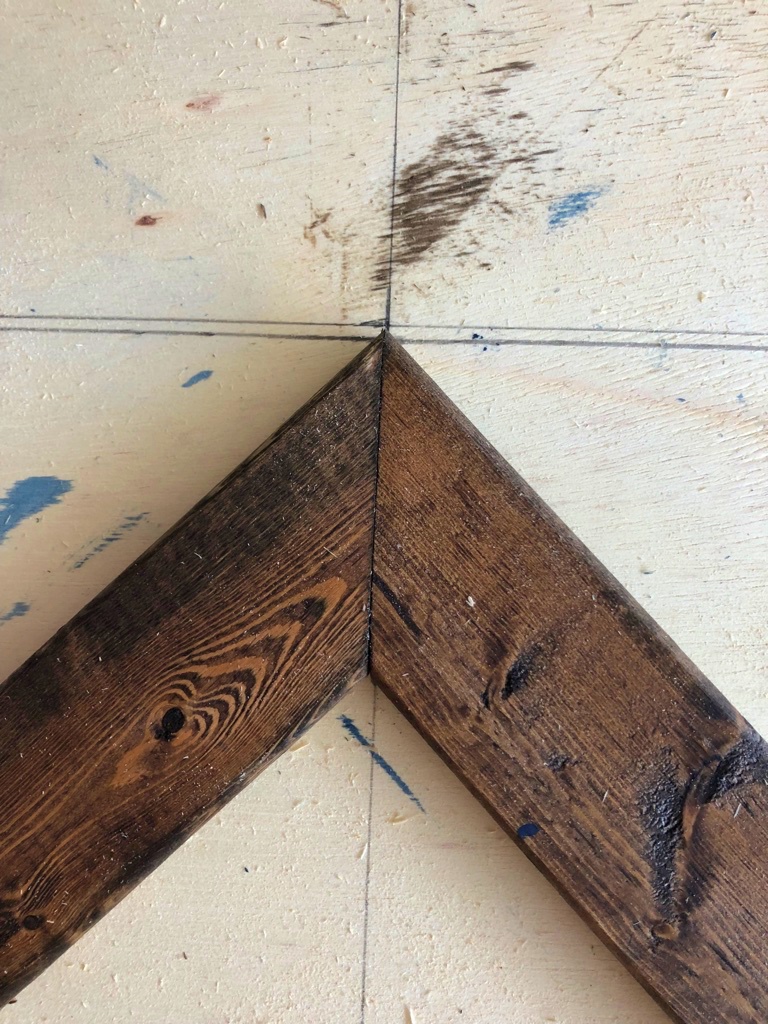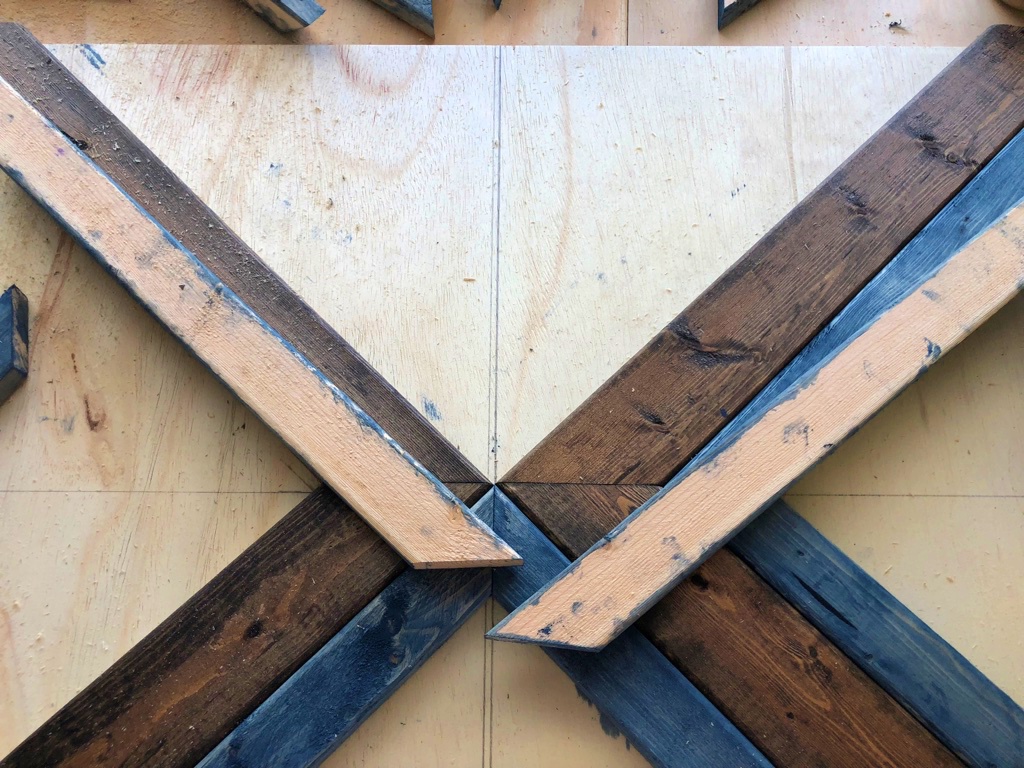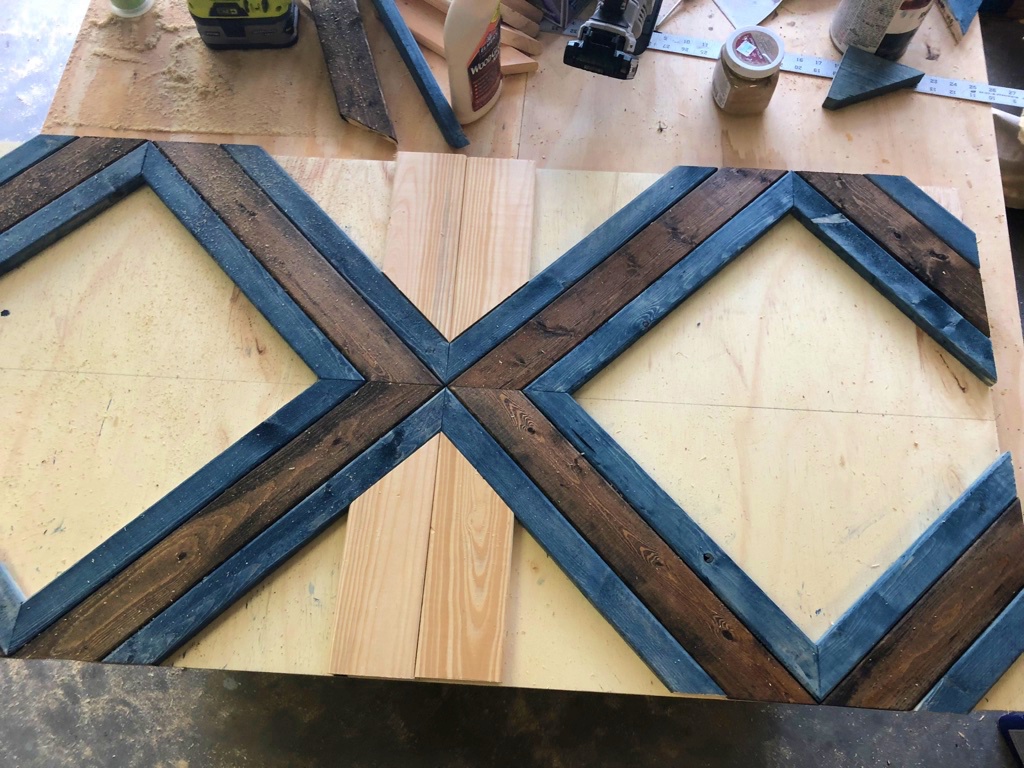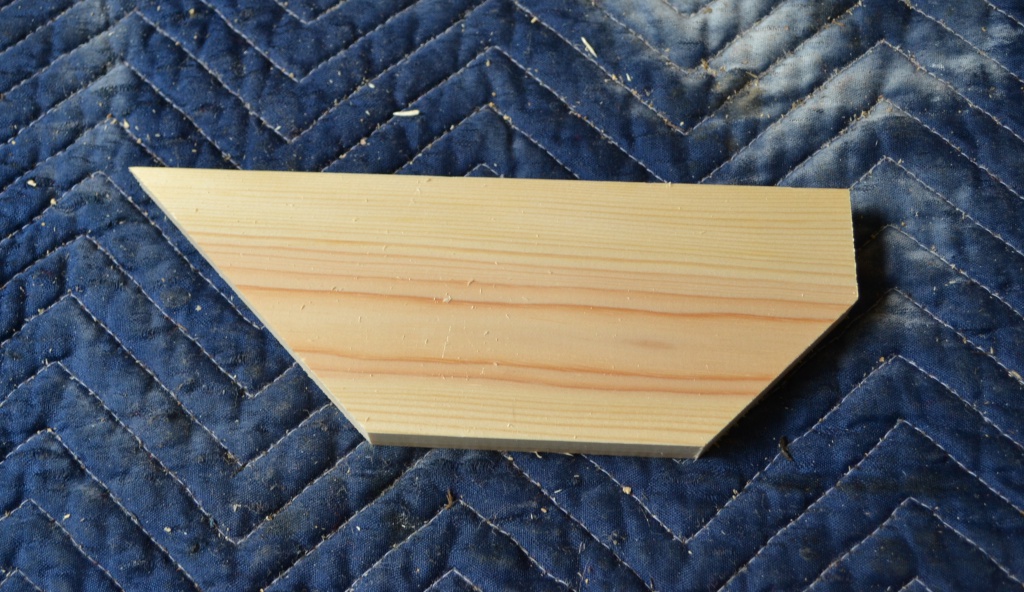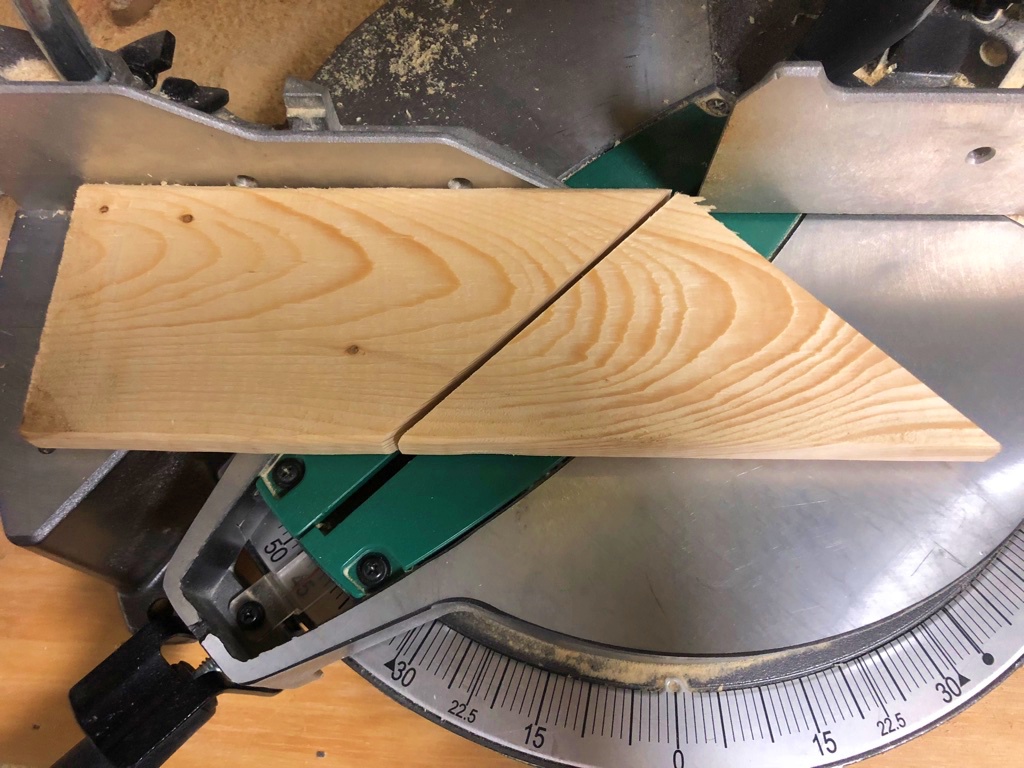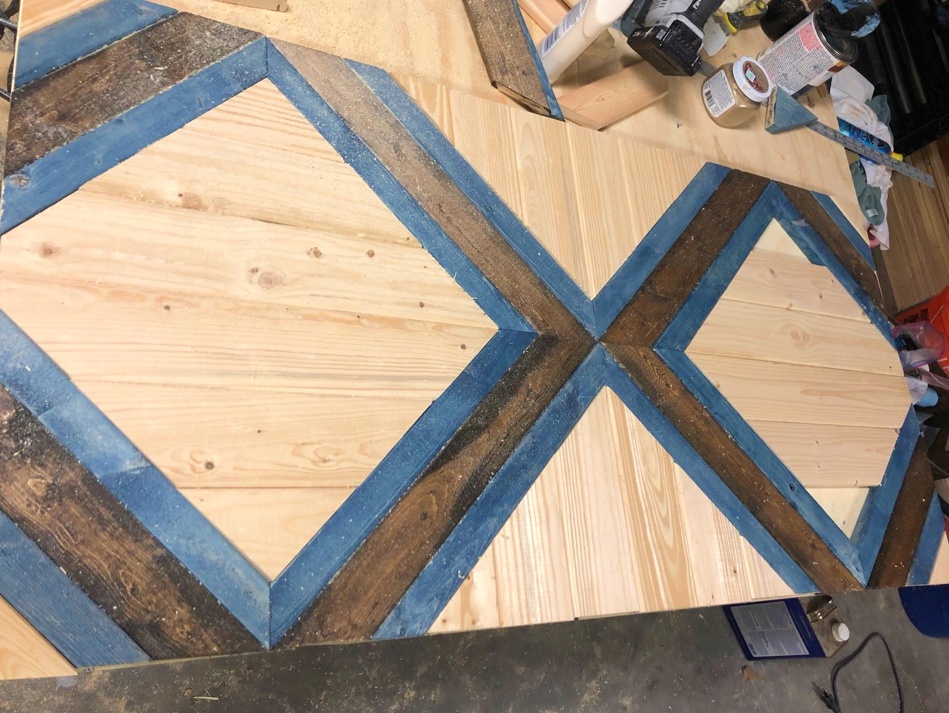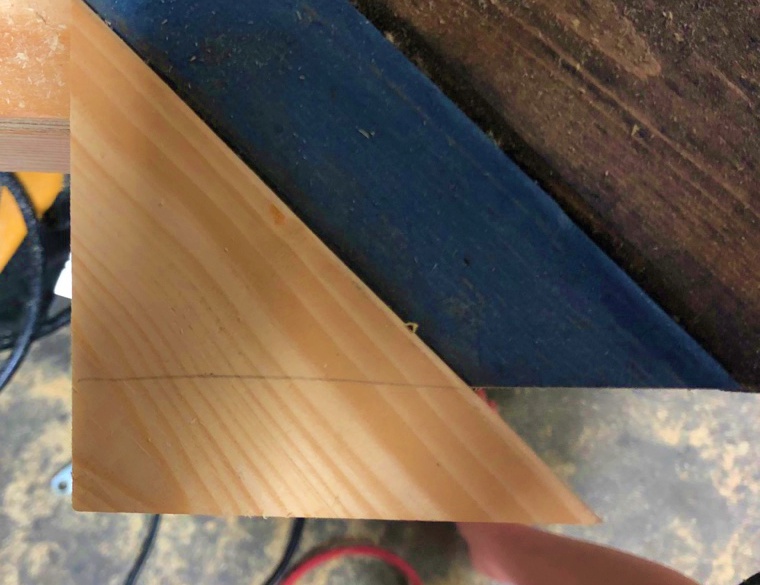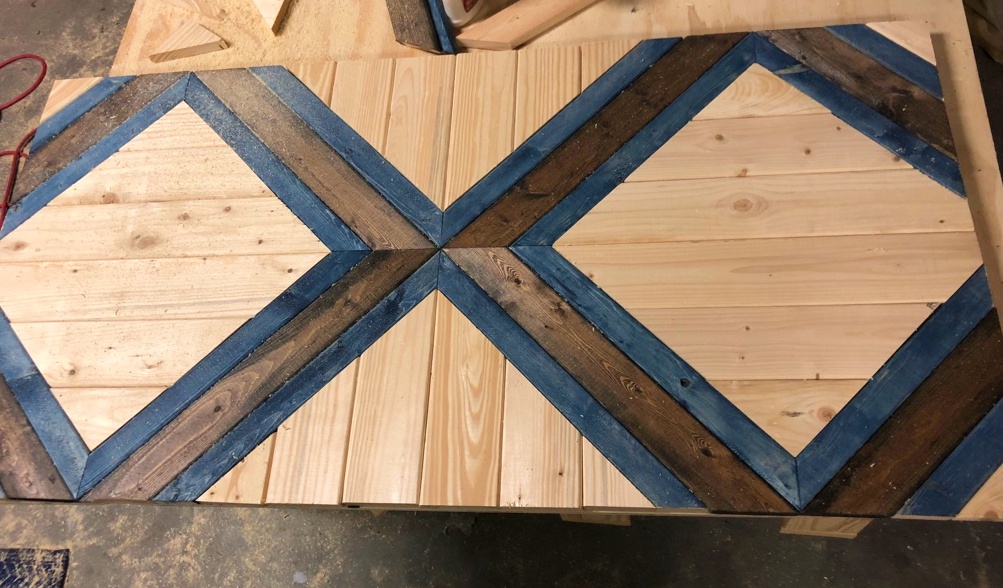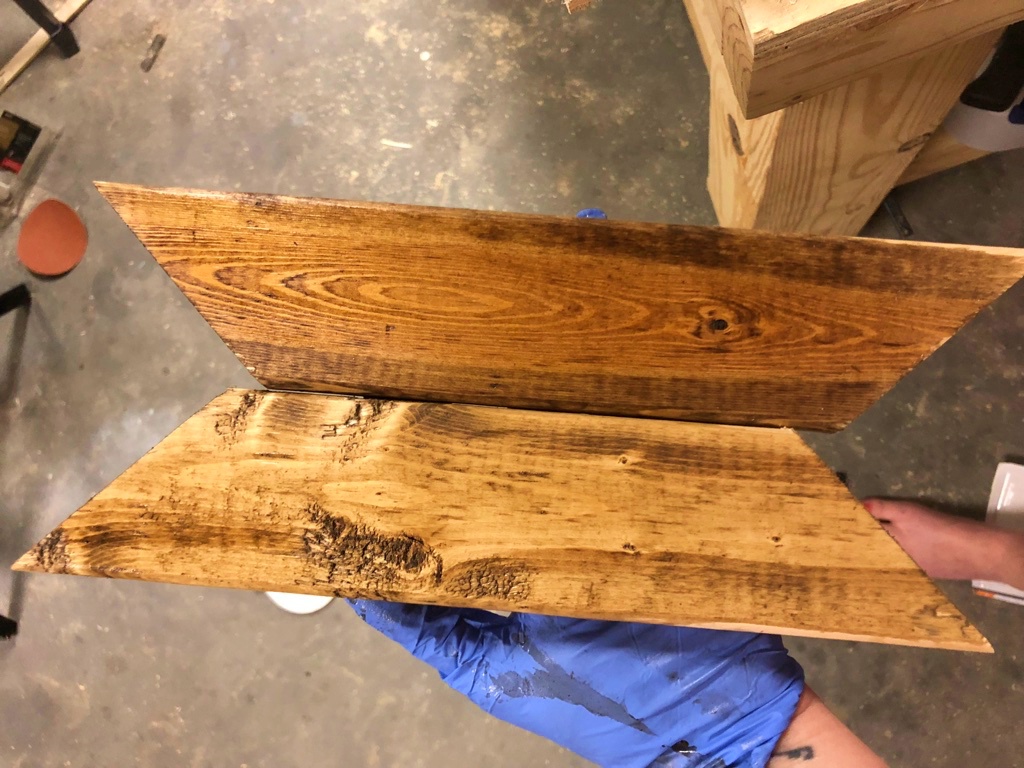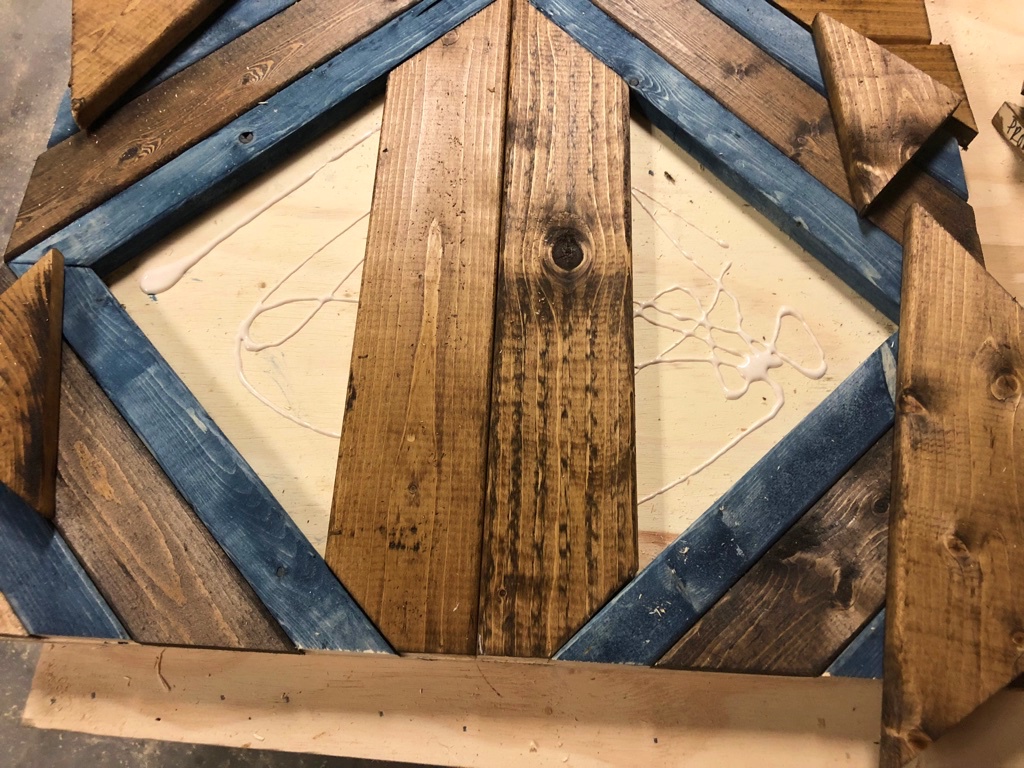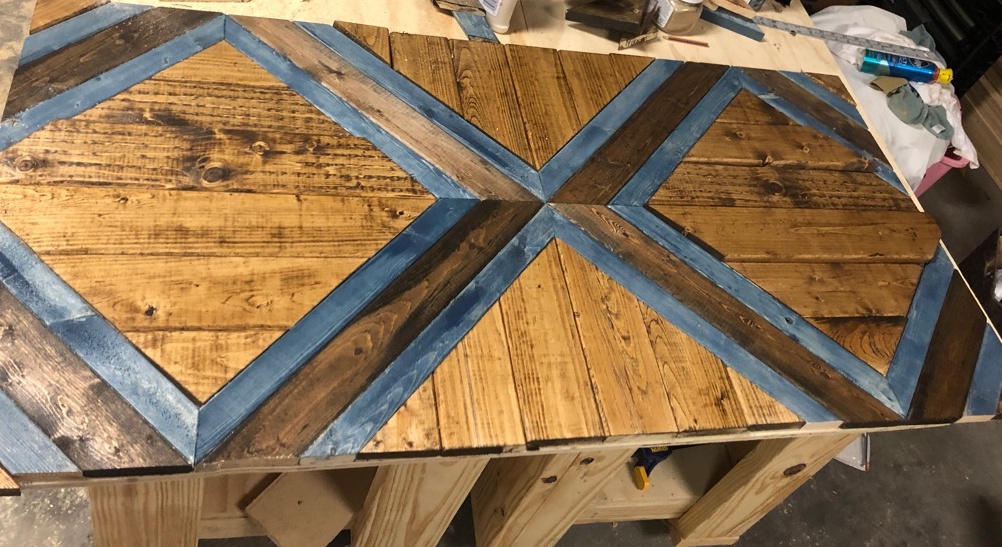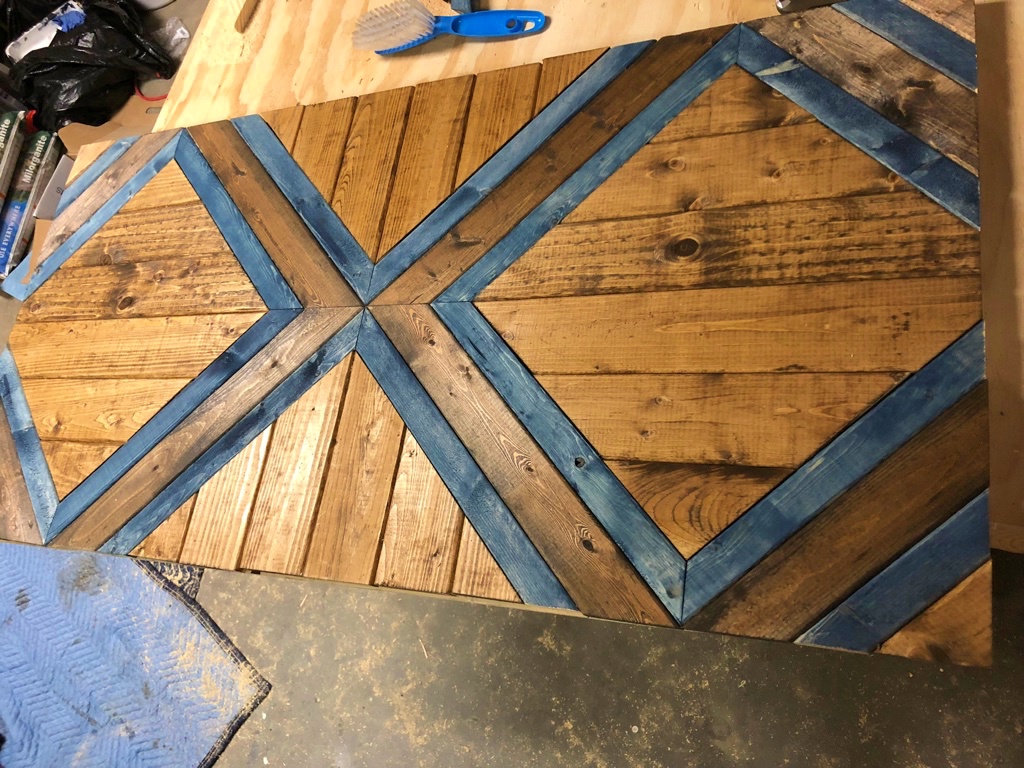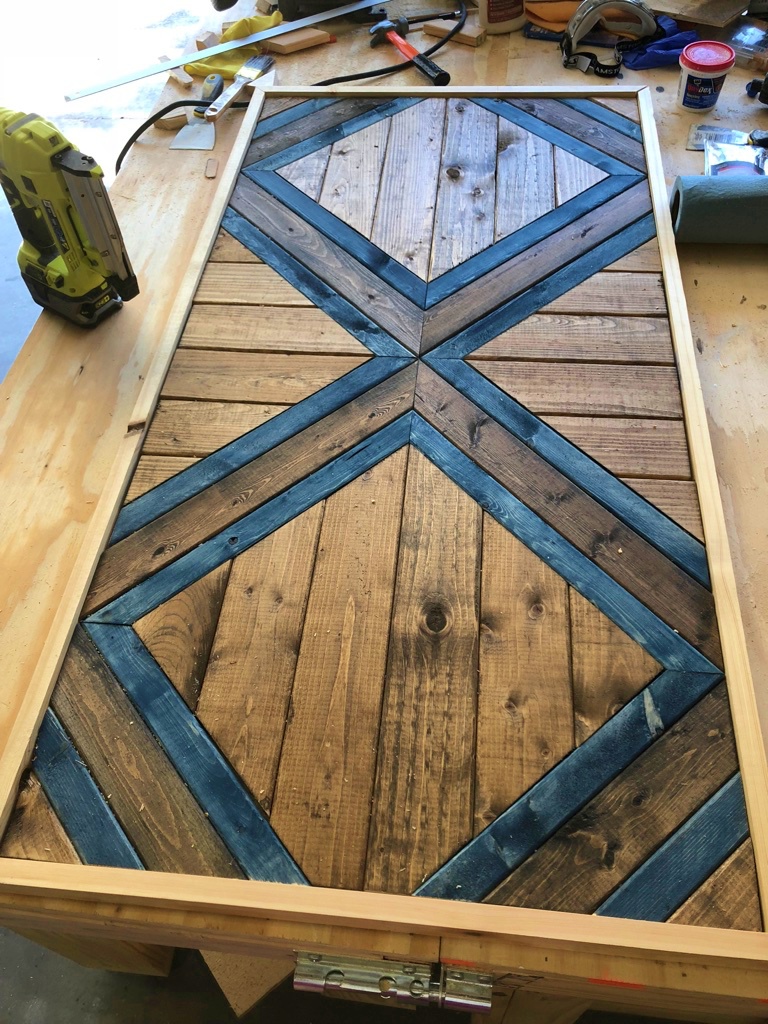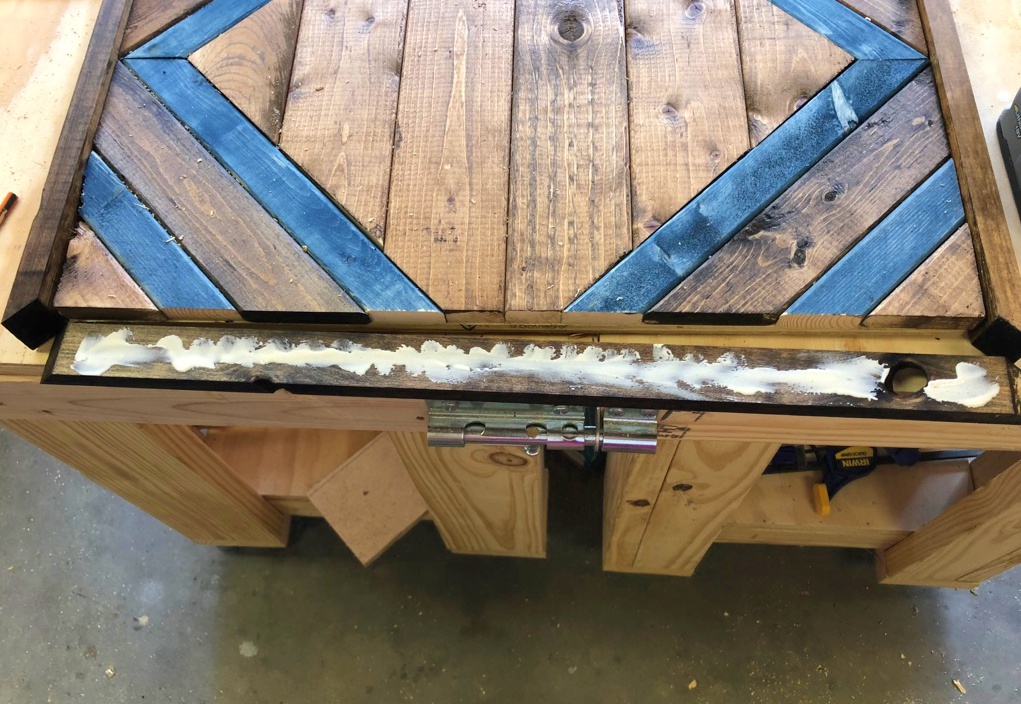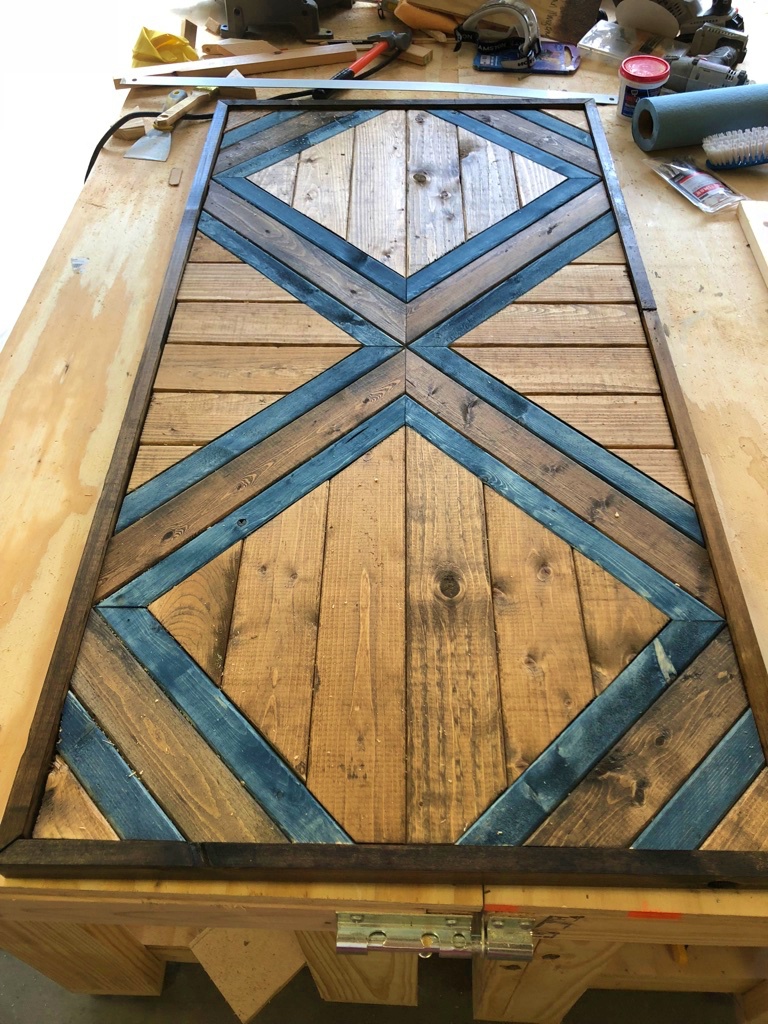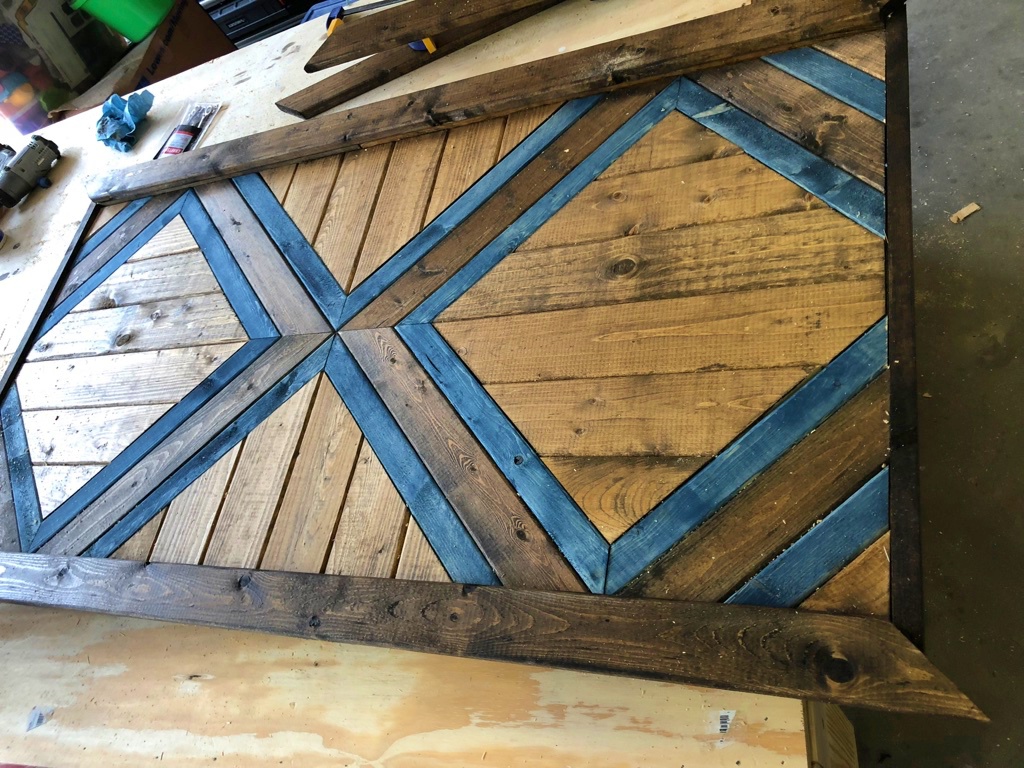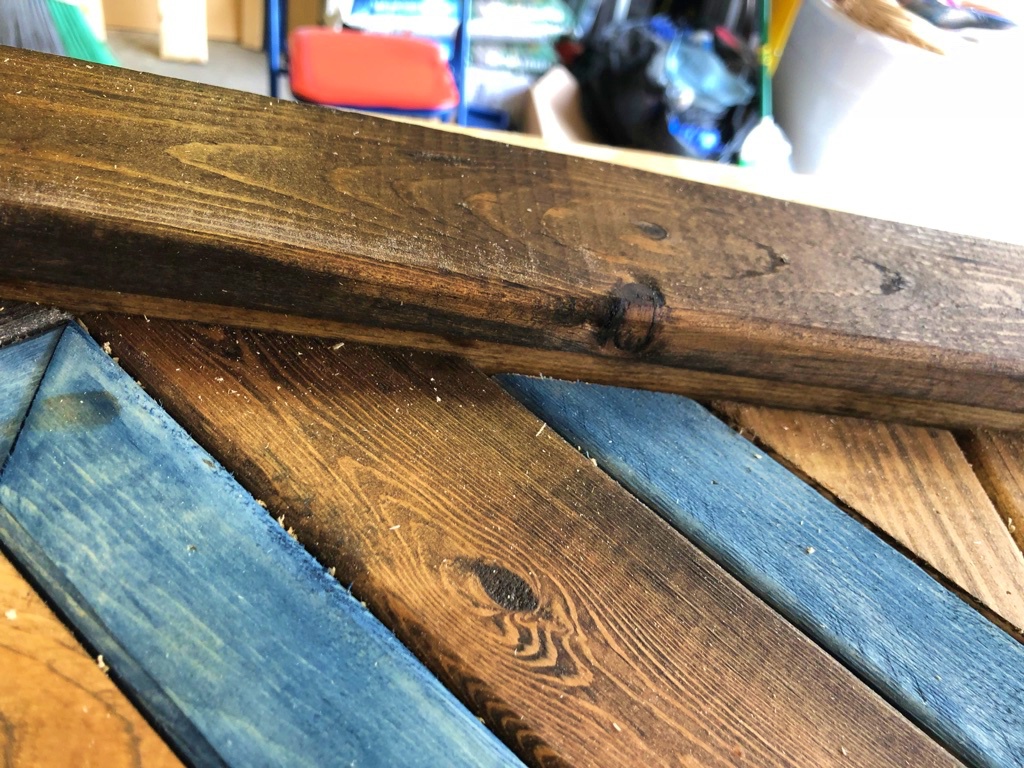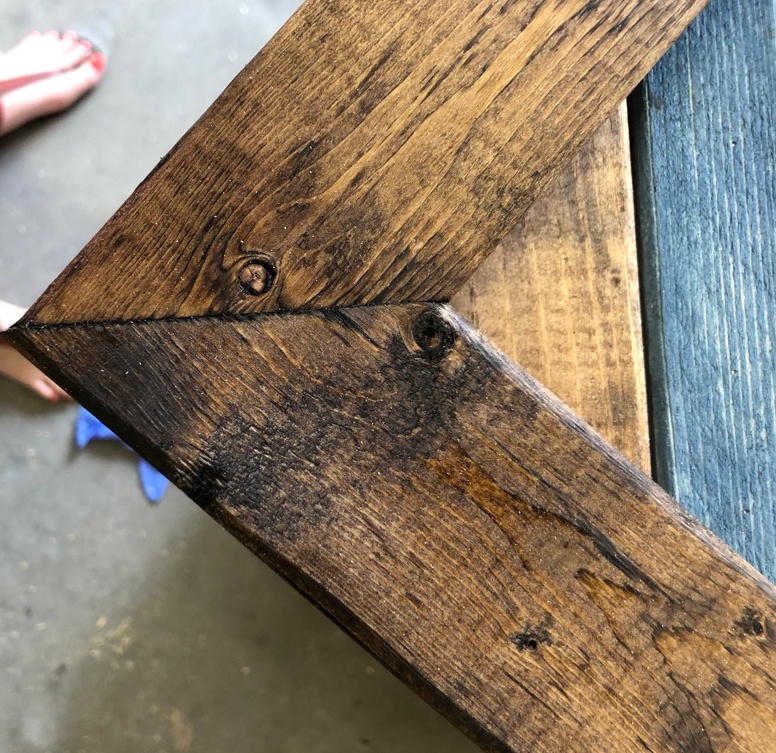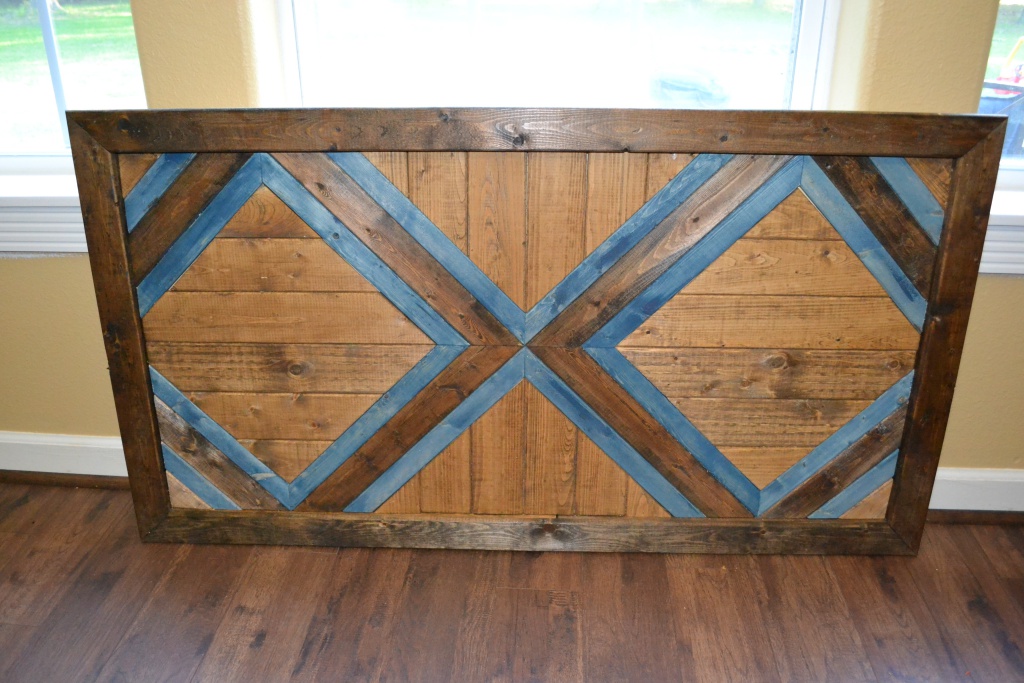For our next project in the Mother’s Day Series, we are going to do something totally different. There is something about art that in general that I have never understood. I don’t think of myself as unrefined but the workings of Picasso get a bit lost on me. Ironically, there is nothing that speaks to my artistic side more than working with wood. The imperfections in wood are what makes it so beautiful to work with and learning to bring out the best in wood is one of my passions. Art adds the finishing touches to a home, much like the Moms in our life do too. What better way to show them how much they mean to us than to create art they will enjoy every day in the home.
Design
Designing these types of things happens two ways for me. Sometimes I’ll sketch something really awesome out and I will recreate that idea exactly. Other times, I will go out to the shop and just do what speaks to me. This time I had an idea in mind, and after making the first few cuts, I decided to switch it up a bit. This was a sketch I did after the fact, again not an artist by any means but I always try and keep ideas in a book for reference. I purposely used wood that was inexpensive and somewhat rustic to minimize cost, but I also think it adds to the homey feel of the piece. What is amazing about the process of this project is that you really can’t go wrong!
Two notes for you guys as you start the instructions, I made this project quite a while ago, and I’ll be honest I never measured a thing except the initial plywood and frame. I know that seems strange, but for these types of projects, I like to try and go with the flow. While precision is so important in building furniture, or really any assembly, this project relies on your vision and creativity. This project also has a lot of variables that could slightly change measurements, such as slight warping of the wood, or a slightly off miter saw. So while I include measurements as I go, they will likely have some changes for you if you choose to replicate the idea entirely. Also, I have since switched how I do the photos so forgive the imperfect shots!
Supply List
- 1- 1/2 inch plywood sheet cut to 2X4 feet
- 4-1X3 8 foot pine furring strips
- 2-1X2 8 foot pine furring strips
- 4- 1X4 8 foot pine furring strips
- 2-1X2 8 foot common boards
- Various stain colors
- Wood Glue
- 1-inch pin nails
- 1 1/4 inch brad nails (for the frame)
- Measuring tape and speed square
Tool List
- Miter Saw
- Pin Nailer
- Brad Nailer
Cut List
As I mentioned previously this project was done in a “cut as you go” fashion. Generally, I will include cut lists, but for this project look for measurements throughout the tutorial.
Instructions
One thing I want to explain that you will see in the instructions. I am sure there is a technical term for the way these are cut, but the top is a better view of what I call a “parallel” cut, and the bottom is a perpendicular cut or opposite. I always think parallel because if the line of the angles continued they would run parallel to each other, and perpendicular because if they continued they would eventually intersect, or run in opposite directions. Dry fitting is your friend in this project and will save you a ton of headaches later on.
Initially, I lay my plywood flat and find the centers to mark. Depending on how complex a design is, I may make several measurements in quarters as well, but since this is center justified I marked the midpoint horizontally and vertically. I had my wood cut at Home Depot before I brought it home, and generally, it won’t be perfectly square. It’s always best to measure and be precise so you can prepare for adjustments.
After Marking, my plywood looks like this.
Cut- 4-1X3- 17 inches with 45-degree parallel angles
The first few cuts made are the center pieces to the main X in the center. These 1X3’s are cut at 45-degree angles and measure 17 inches long, but notice the angles run parallel when cut.
Cut 4-12-inch 1X3’s with 45-degree angles
Next, to continue the X pattern going towards the sides, I cut 12-inch 1X3’s with 45-degree angles cut opposite The pattern would naturally extend past the ends, but since it terminates, we cut it to fit the board.
Cut- 4-1X2 16.75 inches at 45-degree perpendicular angles
4-1X2 at 12 inches with 45-degree angles parallel
4-1X2 at 7.5 inches with 45-degree angles perpendicular
The 1X2’s framing the X run 16.75 inches from longest point to longest point, and are cut at 45 degrees opposite each other. Similar to how you would cut for a picture frame.
Now that the focus of the piece is done, we want to start deciding what colors to use and how. This process is always the most fun. I play around with stain colors I have in stock, but I also played around with different paints I had too.
For the center 1X3’s I used Minwax Dark Walnut. I love a rich deep brown, and nothing is prettier than a bold contrast against it.
To create a contrast and a bit of a pop of color, I wanted a blue for the 1X2’s bordering the center X. I played around with a blue stain but felt it lacked the vividness I was going for. (left sample is stain, right is two different diluted shades of blue, I decided on the darkest shade)
I wanted to try something new, so I took good old craft acrylic paint and watered it down a bit and applied it to get that perfect color without hiding the beauty of the wood. It looks bright here, but it’s actually a deep midnight blue.
You will notice I only stained one side, and didn’t stain the end grain. You absolutely can, but once framed and attached you won’t see these pieces at all.
Once all of these pieces have dried, I start actually attaching them to the board. I use a small amount of wood glue and several pin nails. I love how easy it is to hide those pin nails, especially in stained wood! Take your time in laying these pieces to be as precisely positioned as possible.
It may seem strange to not do this all at once or to stain in phases this way but the best way to use multi tones is to break it up. In my experience trying to assemble and then stain always ends in disaster. Also, when you actually nail these pieces down you will find that there will be slight shifts and it makes the next step easier to account for measurement changes.
Cut 4- 1X4 at 9.75 inches one side is at 45-degrees, and one is at 90-degrees.
Now we start our cuts for our 1X4’s! These become the background of the piece and have a lot of power to really enhance the main focus. Now that our center X is set and done, measuring becomes easier as there won’t be any shifts in the X. I start assembly in the center, and these center most boards measure 9.75 inches from tip to end.
Cut- 4 1X4’s at 6.5 inches- one side 45-degrees, one side 90 degrees to complete the center. ( we will do the small triangles last).
To begin the sides diamond inserts-
4- 1X4’s at 13 inches both ends cut at 45 degrees perpendicular to one another.
4- 1X4’s at 6 3/8ths both ends cut at 45 degrees.
Cut- 4 1X4’s at 18.5 inches- one side will be 45 degrees, the other will have a 45-degree angle but a small area will be trimmed to 90 degrees to terminate at the end of the plywood. It should look something like this, only longer.
Next- we fill in the blanks. These triangles can be tough to cut precisely. My best advice is to use a 45-degree angle on your board and cut an additional angle like so.
The center portion has a 3-inch triangle. The biggest thing here is to watch for grain orientation as this will shift how you cut the wood in relation to the angle cuts.
No matter how precise you are, you will have some variance between corners. The far most corners measured 4.75 inches on their longest side. A lot of time though, marking it by hand and following the cut is easier.
So, here we are! The hardest part is over!.
Now, to pick the perfect stain to complement the rest of the piece. I have a lot of shades on hand, but no matter what I do, I seem to never quite love the stock shade. I am not sure how often other people do this, but oil-based stains are amazing to mix! You can layer too, but for this I wanted it to not be too dark and even with light stains pine tends to drink it. I used a mason jar and mixed classic gray and provincial from Minwax together and got the bottom vs 100% provincial on top.
As with before, after staining, use wood glue and pin nails to attach to the plywood. You may still notice some errors so take your time on this part. Always attach the biggest piece in a section before you move on.
It’s starting to really come together now!
When looking from this angle, you’ll notice a few imperfections. I am by nature a perfectionist, but I purposely left some small fluctuations to show you how easily the frame will cover it.
Cut 2- 1X2 common boards at 49.75 inches
2- 1X2 common boards at 25.5 inches
When you start the frame, there are two huge key things to remember. Using straight edge common board will give you a more level place to attach the second part of the layered frame. You won’t see this as much as the top, but keeping it tightly attached and taking your time in measuring and nailing is the key to a clean looking frame.
Once I was happy with the inner frame measurements, I stained them the same Dark Walnut as the center X and let them dry. I then attached the frame using wood glue and a combination of brad nails and pin nails. You don’t want to overuse the brad nails, you need them for strength but they can easily damage the piece if not shot low enough. Try and shoot them low and into the plywood to avoid them damaging the front of the piece and rely on the more level edge of the plywood. Shooting additional Pin nails add additional security and aren’t as prone to damaging the wood allowing you to be more liberal with them.
Looking good, right? If you want a cleaner line, feel free to stop here. I normally would, but I wanted to give an option to cover any slight mistakes and give some more boldness to the frame.
The top of the frame is assembled similarly to the bottom. The key here is that you want it to slightly overlay this frame on both sides.
Cut 2- 1X3 at 52.5 inches
2-1X3 at 28.5 inches.
The slight overlay conceals any errors when hung, and adds a lot of character to the piece.
Take your time and be sure the corners are mitered tightly. This can be a little tedious but ensuring this really enhances the finished project.
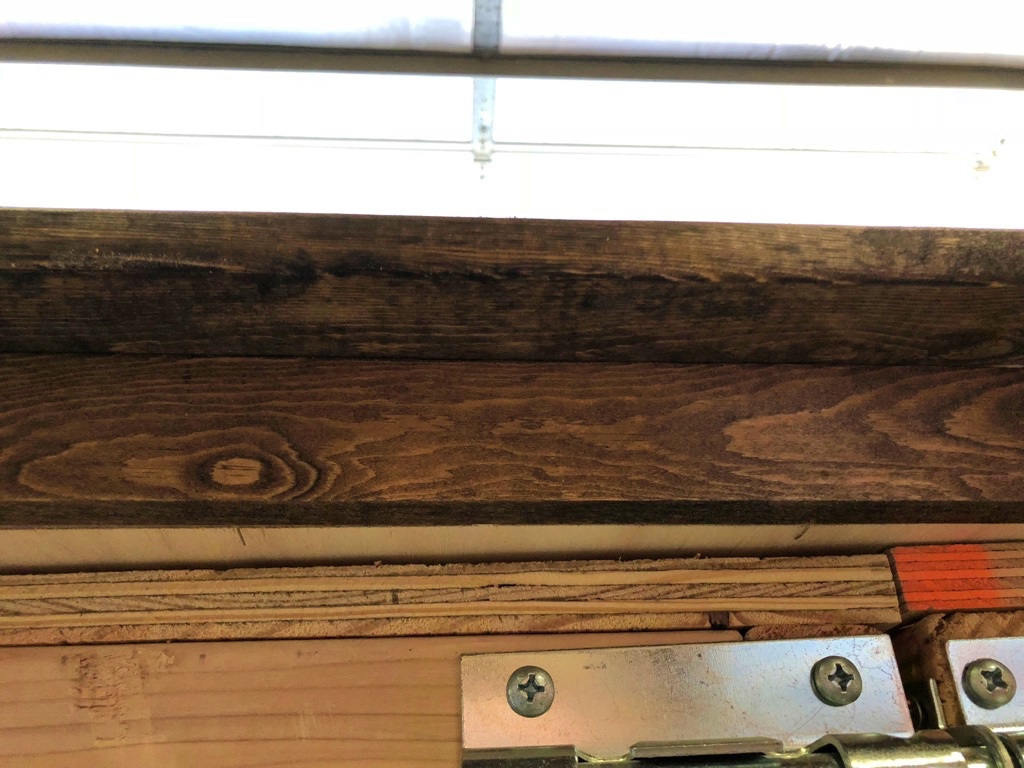 From the underside, this is what the frame will look like. Attach using pin nails and wood glue. I ran several nails on each board.
From the underside, this is what the frame will look like. Attach using pin nails and wood glue. I ran several nails on each board.
We are done!
Conclusion
Wood Wall Art is one of the most rewarding and creative projects you can do. Every single day the person you made this gift for walks past it, they will be reminded of your thought and time spent creating something beautiful just for them. Use this idea and take some tips from my process and create a masterpiece that is perfect for your space and decor. I can’t wait to see how this idea is replicated, and as always be sure to tag #TIAcrew whenever you post your creations so the whole team can check out your work!
Tips and Tricks
- One of biggest tricks with this project is to take breaks. I assembled this in phases to prevent burning out.
- If you have attached a piece of wood and notice it is overhanging a bit, once the glue has dried you can always trim it using a jigsaw. Just be sure the wood is secured to the board first.
- When cutting, I would rather slightly overcut rather than undercut. In most projects the goal is to make a single cut, no doubt it is more efficient, but in this, it is better to be able to make slight adjustments.
- You can certainly switch the inexpensive furring strips to a straight edge common board, or even mix in some other woods to add additional depth.
- Buy extra wood! I left some room for error but if you make a mistake on a cut, don’t give up. Always save those pieces because areas like the corners need strange sizes, so they can always be reused!
- I hung this using a French Cleat. I definitely recommend that for a project this heavy!
- Be patient when nailing to prevent the nail going into the wrong place.
- Write a quick note on the back, telling your loved one how much they mean to you!

